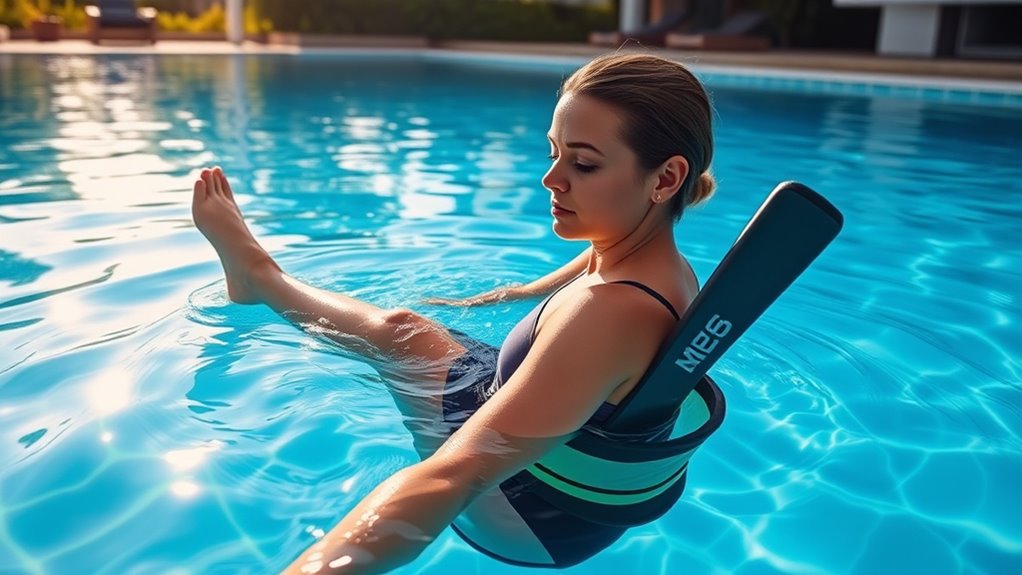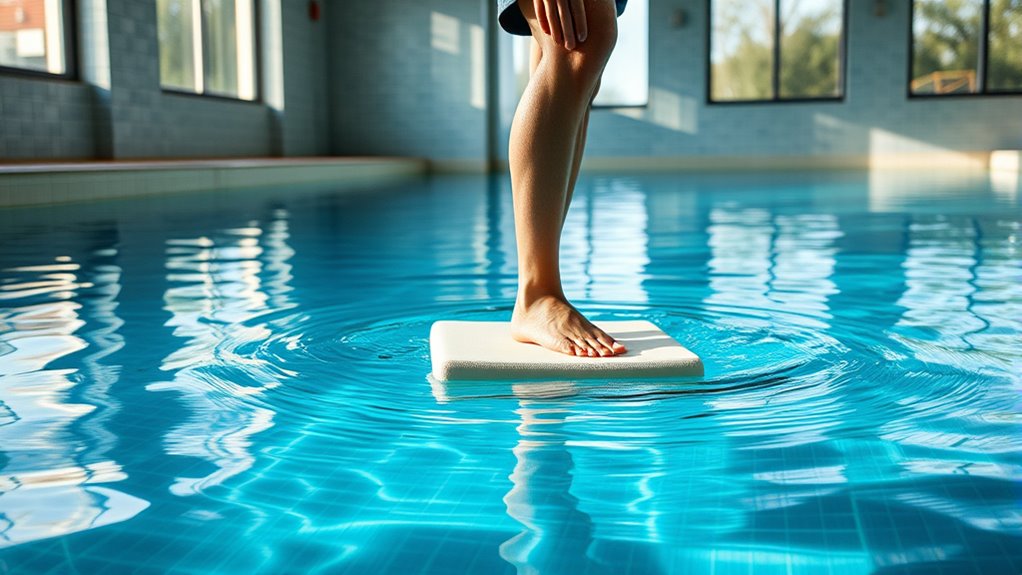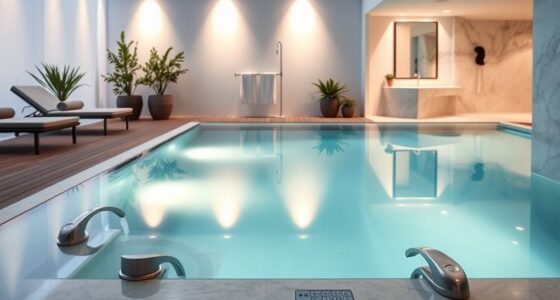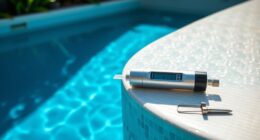Recovering from knee replacement? Pool therapy can be a safe and effective way to support your recovery. The water’s natural resistance helps rebuild strength and flexibility, while buoyancy reduces joint pressure and minimizes discomfort. Gentle exercises in the pool, like walking and stretching, promote circulation and mobility, making daily activities easier and less painful. Keep exploring how water therapy can boost your healing journey and get you back to normal faster.
Key Takeaways
- Pool therapy offers a safe, low-impact environment that supports gentle movement and reduces joint stress during recovery.
- Water resistance helps rebuild muscle strength and improve flexibility without overexertion.
- Early aquatic exercises promote circulation, reduce swelling, and ease joint stiffness post-surgery.
- The buoyancy minimizes pain and risk of falls, encouraging consistent participation in rehab routines.
- Overall, pool therapy accelerates healing, enhances mobility, and boosts confidence in daily activities.

Are you wondering how pool therapy can aid your recovery after a knee replacement? The good news is that immersing yourself in water can be a game-changer during your rehab process. Pool therapy offers a gentle, supportive environment where you can perform aquatic exercises designed to rebuild strength, improve flexibility, and restore your mobility. Unlike traditional land-based exercises, water provides natural resistance, which means your muscles have to work a bit harder without putting excessive strain on your healing knee. This resistance is key to gradually strengthening your muscles, improving joint stability, and reducing swelling, all while minimizing discomfort.
When you start pool therapy, you’ll notice that water resistance plays a vital role. It acts as a natural form of exercise that challenges your muscles without the harsh impact of weight-bearing activities. For example, simple movements like walking or leg lifts in the water become more effective because water resistance slows down your motions and makes your muscles work harder. Over time, this helps you build strength and endurance, essential for regaining normal function. The buoyancy of water also takes pressure off your knee, allowing you to move more freely and confidently, which can be difficult when walking or standing on land.
Aquatic exercises are particularly beneficial early in your recovery, especially if you’re experiencing pain or stiffness. These exercises can include gentle stretching, leg swings, or water walking—activities that promote circulation and reduce swelling while easing joint stiffness. As your strength improves, you can gradually increase the intensity and complexity of your routine. The beauty of pool therapy is that it can be tailored to your specific needs and recovery stage. Your physical therapist can guide you through exercises that maximize water resistance to challenge your muscles safely.
Another advantage is that exercising in water lowers the risk of falls or injuries. The supportive environment of the pool makes it easier to focus on proper movement and technique without fear of slipping or overexerting yourself. This safety aspect encourages you to stay consistent with your rehab routine, which is fundamental for a successful recovery. Plus, the soothing properties of water can help reduce pain and muscle soreness, making each session more comfortable and encouraging you to stick with your rehab plan.
In short, incorporating aquatic exercises with water resistance into your recovery can accelerate healing, boost muscle strength, and improve your overall mobility after a knee replacement. It’s a gentle yet effective way to regain confidence in your movements and get back to your daily activities with less pain and more stability.
Frequently Asked Questions
How Soon After Surgery Can I Start Pool Therapy?
You might start pool therapy soon after your surgery, but it depends on your post-surgery pain levels and your doctor’s advice. Usually, gentle water exercises can begin once your pain is manageable and swelling decreases. The water temperature should be warm, around 83-88°F, to relax muscles and reduce discomfort. Always follow your healthcare provider’s guidance to guarantee safe and effective recovery through pool therapy.
Are There Any Risks or Precautions With Pool Therapy?
When considering pool therapy, you should be aware of risks like infection, especially if the water isn’t properly sanitized. Guarantee the water temperature is comfortable and within recommended ranges to prevent muscle strain or discomfort. Always follow your therapist’s guidance, and inform staff about any open wounds or skin issues. Taking these precautions helps minimize risks and makes your pool therapy sessions safer and more effective.
What Types of Exercises Are Included in Pool Therapy?
Imagine slipping into a soothing aquatic world where gentle movements awaken your muscles. In pool therapy, you’ll perform exercises like aquatic stretches to enhance flexibility and resistance exercises to build strength. The buoyancy minimizes joint stress, making it easier to move. These tailored activities are designed to support your recovery, boost confidence, and promote healing—all while enjoying the calming effects of water.
Do I Need Special Swimwear or Equipment?
When it comes to pool therapy, you don’t need much special equipment. Focus on a comfortable, well-fitting swimwear selection that allows freedom of movement and provides support. You might also want to use pool safety gear like goggles, a kickboard, or a pool noodle to help with exercises. Always check with your therapist or instructor for specific recommendations to guarantee your safety and comfort during sessions.
How Often Should I Attend Pool Therapy Sessions?
You should attend pool therapy sessions as often as your healthcare provider recommends, typically 2-3 times a week. Regular sessions can help reduce arthritis pain and enhance mobility improvement. Consistency is key, so sticking to the schedule allows you to see steady progress. Listen to your body, and if you experience discomfort, consult your therapist to adjust the frequency, ensuring safe and effective recovery.
Conclusion
So, if you’re recovering from knee replacement, pool therapy offers gentle support, steady progress, and renewed confidence. It eases pain, builds strength, and restores mobility—all in one soothing environment. Embrace the water’s embrace to heal, to strengthen, to move forward. Let the pool be your partner in recovery, guiding you through each step, each movement, each victory. With pool therapy, you’re not just healing—you’re transforming your journey into a wave of renewed hope.









